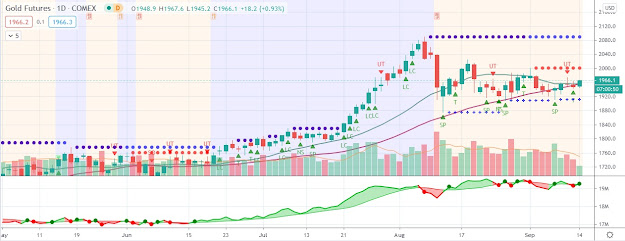Disappointing non-farm payrolls data - Gold price back to 1,600 Level
The gold price surged higher Friday morning, by $49.77, or 3.2%, to
$1,612.48 per ounce following a very disappointing report on the U.S.
labor market. The spot price of gold
hovered near $1,550 in overnight trading, but turned sharply upwards
following the worse than expected non-farm payrolls report for May.
The May employment report showed that the U.S. economy added only 69,000 jobs, far below the 150,000 consensus estimate among economists and even less than the lowest forecast of 75,000. Furthermore, the April non-farm payrolls figure was revised downward from 115,000 to 77,000 while the March data was cut from 154,000 to 143,000. As for the unemployment rate, it climbed from 8.1% to 8.2%.
Commenting on the jobs data and the implications for the gold price, Saxo Bank vice president Ole Hansen stated that “(The report was) very poor and confirmed the midcycle slowdown in the United States. Whether it will be enough to change the mind of the Fed towards additional QE remains to be seen. At least the gold market believes it could happen.”
Commenting on the disappointing non-farm payrolls data and its implications for financial markets, Richard Hastings – a macroeconomic strategist at Global Hunter Securities – contended that “not only would there be more speculation about [a third round of quantitative easing] … but all of the data speak to tax revenue dilemmas due to growth limitations, and this means the U.S. budget comes back into focus. If this occurs, then gold could rally this summer.”
The May employment report showed that the U.S. economy added only 69,000 jobs, far below the 150,000 consensus estimate among economists and even less than the lowest forecast of 75,000. Furthermore, the April non-farm payrolls figure was revised downward from 115,000 to 77,000 while the March data was cut from 154,000 to 143,000. As for the unemployment rate, it climbed from 8.1% to 8.2%.
Commenting on the jobs data and the implications for the gold price, Saxo Bank vice president Ole Hansen stated that “(The report was) very poor and confirmed the midcycle slowdown in the United States. Whether it will be enough to change the mind of the Fed towards additional QE remains to be seen. At least the gold market believes it could happen.”
Commenting on the disappointing non-farm payrolls data and its implications for financial markets, Richard Hastings – a macroeconomic strategist at Global Hunter Securities – contended that “not only would there be more speculation about [a third round of quantitative easing] … but all of the data speak to tax revenue dilemmas due to growth limitations, and this means the U.S. budget comes back into focus. If this occurs, then gold could rally this summer.”




Comments
Post a Comment